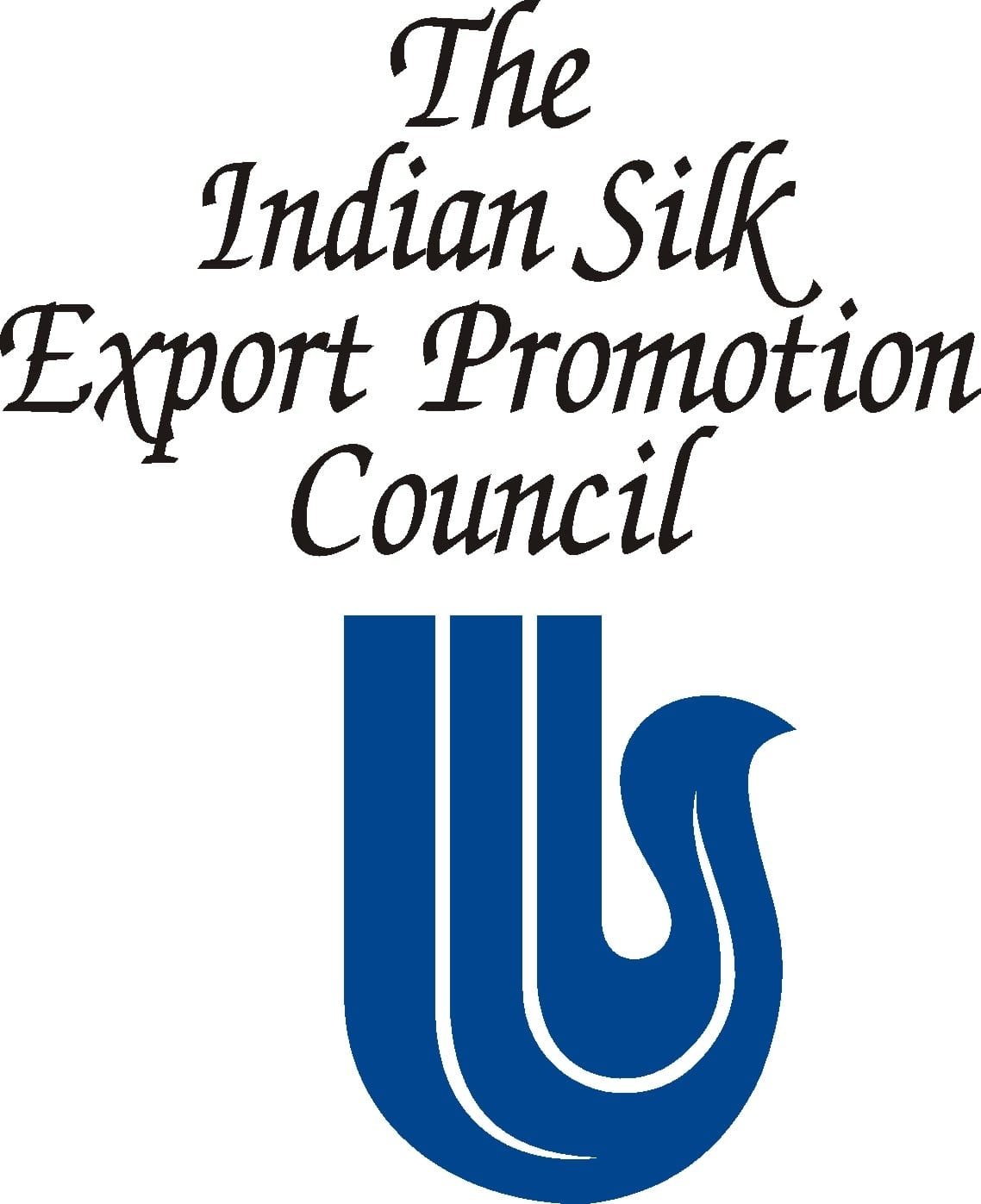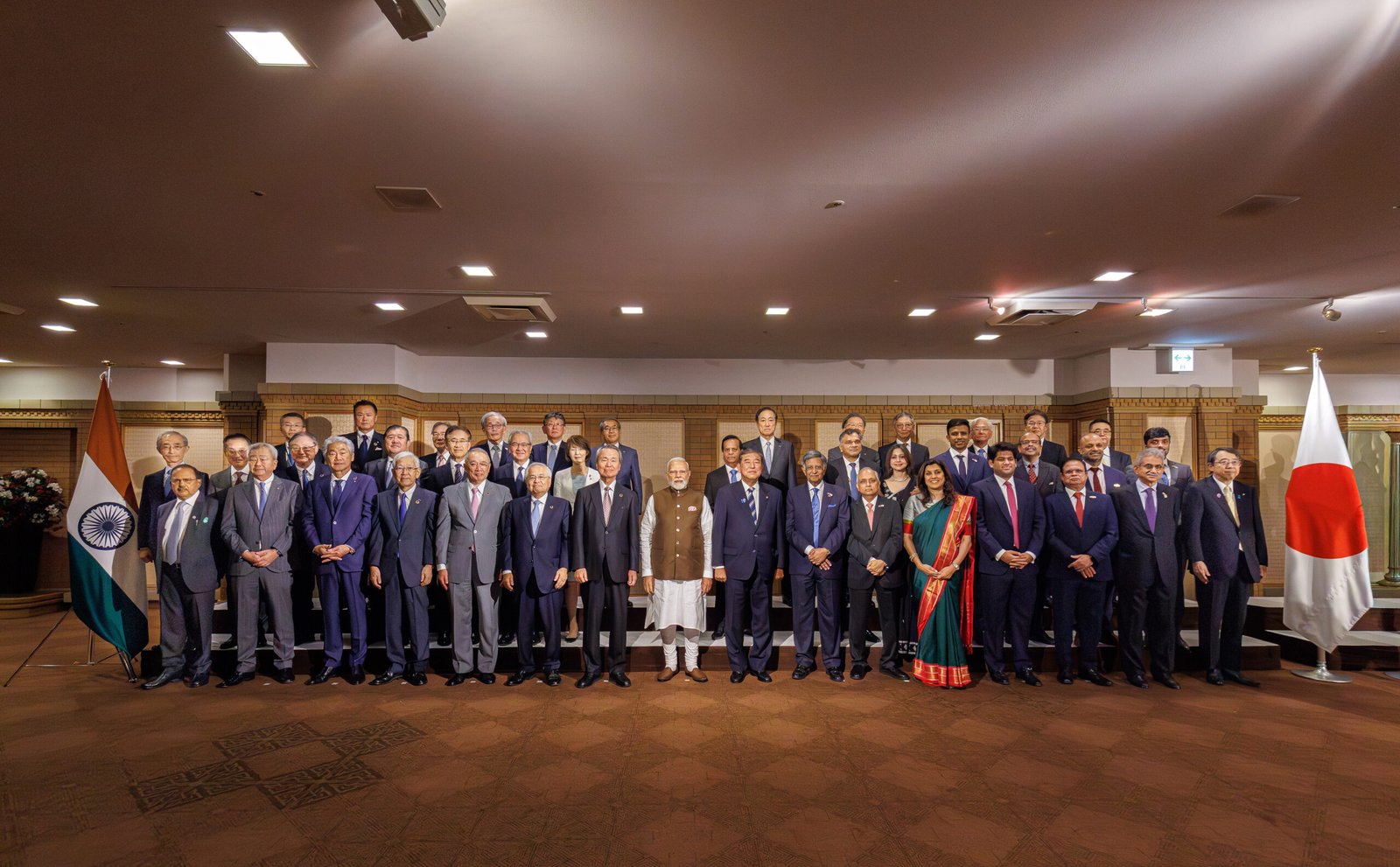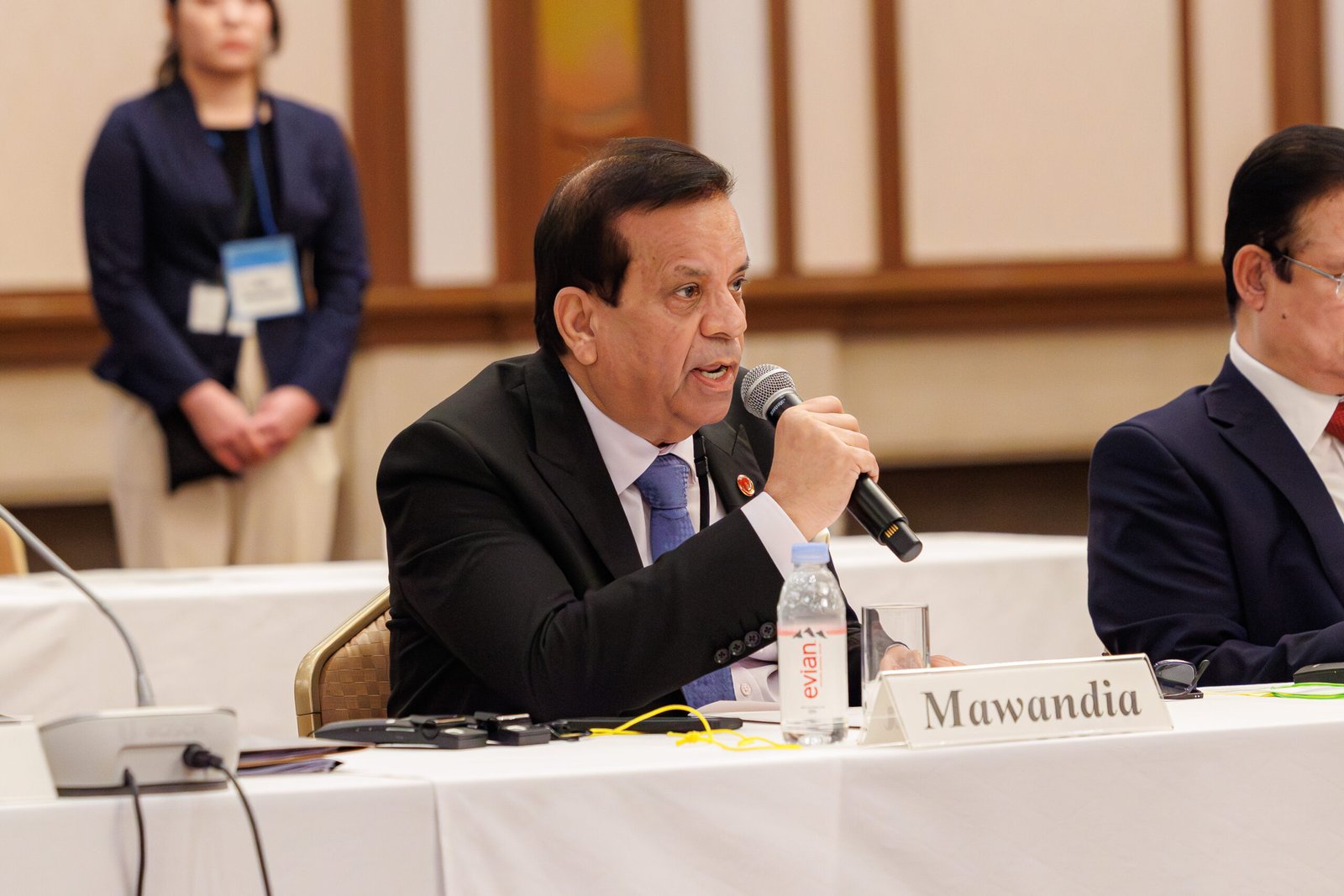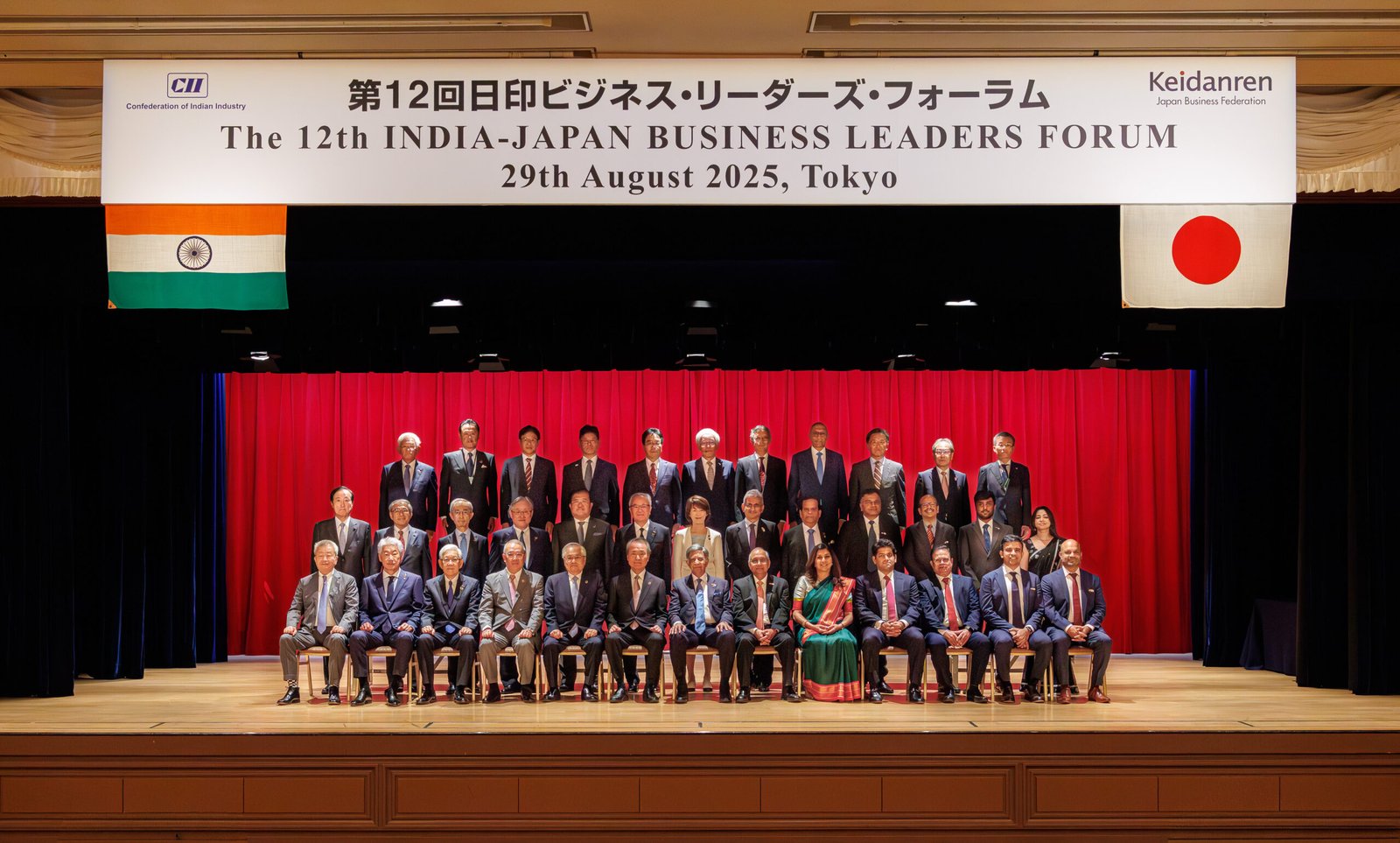Conversation with Dr. Bimal Mawandia, Chairman, Indian Silk Export Promotion Council (ISEPC)

The Indian Silk Export Promotion Council (ISEPC), established in 1983 under the aegis of the Ministry of Commerce, functions as a not-for-profit apex body dedicated to protecting, enhancing, and promoting India’s handmade silk and allied products, including silk carpets, handlooms, and handicrafts, on a global scale. With a proven track record of fostering exports since its inception, ISEPC is presently advocating for a policy shift that would enable local businesses to export directly from their cities, thereby obviating the need to route consignments through metropolitan ports and airports. This proactive measure is expected to empower local enterprises, streamline logistics, and further augment India’s export potential.

Dr. Bimal Mawandia, nick name as Silk Man of India, studied M.Com, LLB and Doctorate in Silk. Dr. Bimal Mawandia is a distinguished figure in the Indian silk industry, boasting a remarkable career spanning five decades. With a doctorate in Silk from Bhagalpur University, he has made a significant impact in the textile sector, particularly in the realm of silk exports. As a prominent exporter of ‘Make in India’ silk products (C/o M/s Vineetaz Export Pvt Ltd and M/s KVNM Trades) Dr. Mawandia’s vibrant and high-quality creations have garnered global recognition.
Key Highlights:
- Awards and Recognition: Recipient of numerous prestigious awards, including the highest export awards for silk made-ups from 1993 to 2021.
- Government Involvement: Active member of several governmental bodies, contributing to textile export policies and initiatives.
- Entrepreneurial Ventures: Operates two firms, M/s Vineetaz Exports Pvt Ltd and KVNM Trade.
- Sports and Education: National-level table tennis player in his age group and award-winning sports and education enthusiast.
- Philanthropy: Involved with a national school chain, contributing to educational initiatives.
Dr. Mawandia’s contributions to the silk industry have earned him the esteemed title of “Silk Man of India.” His dedication to promoting Indian silk products globally is truly commendable.

TextilesResources.com: ISEPC is playing pivotal role in promoting Indian Silk on the global stage, how do you envision the Council’s strategic contribution to the upcoming third edition of Bharat Tex in 2026.
Dr. Bimal Mawandia: The Indian Silk Export Promotion Council (ISEPC) is poised to make a significant impact at the upcoming third edition of Bharat Tex in 2026. Given its pivotal role in promoting Indian silk on the global stage, ISEPC’s strategic contributions can be multifaceted:
- Showcasing Indian Silk Products: ISEPC can showcase a wide range of Indian silk products, including natural silk yarns, fabrics, made-ups, readymade garments, silk carpets, and silk waste, highlighting the diversity and richness of Indian silk.
- Networking Opportunities: By participating in Bharat Tex 2026, ISEPC can facilitate networking opportunities between Indian silk manufacturers, exporters, and global buyers, potentially leading to new business partnerships and export opportunities.
- Knowledge Sharing: ISEPC can participate in knowledge sessions, seminars, or workshops to share insights on the latest trends, technologies, and innovations in the silk industry, positioning India as a thought leader in the global textile sector.
- Market Access: Bharat Tex 2026 provides an opportunity for ISEPC to expand its global reach, connecting with potential buyers and industry leaders from over 40 countries expected to attend the event.
- Promoting Sustainability: ISEPC can highlight India’s commitment to sustainable textile practices, showcasing eco-friendly silk production methods and promoting environmentally conscious products.

TextilesResources.com: Your experience. Learnings, challenges, achievements about previous two editions of Bharat Tex and preparation for the upcoming third in July 2026.
Dr. Bimal Mawandia: Bharat Tex is a significant event in the textile industry, and I’ll share insights based on previous editions and preparations for the upcoming third edition.
Previous Editions:
- Learnings and Achievements
- Global Participation: The 2024 edition saw participation from over 25 countries, solidifying its position as a premier international textile event.
- Sustainability Focus: Both previous editions emphasized sustainable practices, with workshops on zero-waste production, responsible sourcing, and eco-friendly materials.
- Industry Networking: Bharat Tex provided a platform for industry leaders, international buyers, and policymakers to collaborate, share ideas, and drive innovation;
Challenges - Competition and Innovation: With the global textile industry evolving rapidly, Bharat Tex needs to continuously innovate and adapt to changing trends and technologies.
- Sustainability and Environmental Concerns: The industry faces increasing pressure to adopt sustainable practices, reduce waste, and minimize environmental impact.
- Upcoming Third Edition in 2026:
- Dates and Venue: Bharat Tex 2026 is scheduled to take place from 14-17 July, 2026, at Pragati Maidan in New Delhi.
- Expected Participation: Over 5,000 exhibitors, 12,000 textile products, and 6,000 overseas buyers are expected to participate.
- Sectors Covered: The event will showcase textile raw materials, yarns and threads, fabrics, home textiles, silk, silk carpets, handlooms, handicrafts, technical textiles, apparel and fashion, machinery, and equipment.
- Preparation for 2026 Edition
- Exhibitor Registration: Registering for exhibitor passes and planning your itinerary with the interactive map will be crucial for maximizing participation.
- Sustainability and Innovation: The event will likely feature dedicated sessions on sustainable manufacturing, eco-friendly materials, and innovative technologies.
- Networking Opportunities: Bharat Tex 2026 will provide ample opportunities for networking, collaboration, and business development.

TextilesResources.com: Silk remains a premium, culturally rooted product. What measures are needed to protect and scale raw-silk supply chains (sericulture, quality grading, post-harvest processing) so India captures higher value in finished goods?
Dr. Bimal Mawandia: To protect and scale raw-silk supply chains and capture higher value in finished goods, several measures can be taken:
Sericulture
1. Improved Mulberry Cultivation: Promote high-yielding mulberry varieties and sustainable cultivation practices to increase productivity.
2. Sericulture Technology Upgradation: Introduce advanced sericulture technologies, such as automated rearing systems and precision farming, to improve silk quality and reduce labour costs.
3. Training and Capacity Building: Provide regular training to sericulturists on best practices, disease management, and quality control.
Quality Grading
1. Standardized Grading System: Implement a standardized grading system for raw silk, based on international standards, to ensure consistency and transparency.
2. Quality Control Measures: Establish quality control measures at various stages of silk production, including cocoon collection, reeling, and yarn production.
Post-Harvest Processing
1. Modernization of Reeling and Yarn Production: Upgrade reeling and yarn production facilities with modern machinery and technology to improve quality and efficiency.
2. Value-Added Products: Encourage the production of value-added silk products, such as silk fabrics, garments, and home textiles, to increase profitability.
3. Traceability and Certification: Implement traceability systems and certification programs to ensure the authenticity and quality of Indian silk products.
Market Development
1. Branding and Marketing: Develop a strong brand identity for Indian silk and promote it globally through targeted marketing campaigns.
2. Market Research and Intelligence: Conduct market research and provide intelligence to sericulturists, manufacturers, and exporters on market trends, demand, and competition.
3. E-commerce Platforms: Establish e-commerce platforms to connect buyers and sellers, increase market access, and promote online sales.
Policy and Institutional Support
1. Policy Framework: Develop a supportive policy framework to promote sericulture, silk production, and export.
2. Institutional Support: Provide institutional support to sericulturists, manufacturers, and exporters through training, credit, and market access.
3. Research and Development: Encourage research and development in sericulture and silk production to improve productivity, quality, and sustainability.
TextilesResources.com: What are the key outputs ISEPC expects from Bharat Tex 2026 in terms of business generation, buyer engagement, and strengthening India’s Silk textile positioning?
Dr. Bimal Mawandia: The Indian Silk Export Promotion Council (ISEPC) expects significant outcomes from participating in Bharat Tex 2026, focusing on business generation, buyer engagement, and strengthening India’s silk textile positioning. Here are some key outputs ISEPC might expect:
Business Generation
• Increased Export Orders: Bharat Tex 2026 provides a platform for ISEPC to connect with global buyers, potentially leading to increased export orders for Indian silk products.
• New Business Partnerships: The event can facilitate partnerships between Indian silk manufacturers and international companies, expanding India’s presence in the global silk market;
• Market Access: ISEPC can leverage the event to explore new markets and expand its reach to potential buyers from diverse regions;
Buyer Engagement
• Showcasing Products: ISEPC can showcase a wide range of Indian silk products, including natural silk yarns, fabrics, made-ups, readymade garments, silk carpets, and silk waste, to attract potential buyers.
• Business-to-Business Interactions: The event offers opportunities for ISEPC members to engage with international buyers, discuss market trends, and identify new business opportunities.
• Brand Promotion: Bharat Tex 2026 can help promote the Indian silk brand globally, highlighting its quality, craftsmanship, and uniqueness.
Strengthening India’s Silk Textile Positioning
• Global Leadership: By participating in Bharat Tex 2026, ISEPC can reinforce India’s position as a global leader in the silk textile industry.
• Sustainability and Innovation: The event can showcase India’s commitment to sustainable and innovative silk production practices, enhancing the country’s reputation in the global market.
• Cultural Heritage: Bharat Tex 2026 provides an opportunity for ISEPC to highlight India’s rich cultural heritage and traditional craftsmanship in silk textiles, appealing to buyers seeking unique and authentic products.
TextilesResources.com: What are your thoughts about recent tariff updates and trade-policy shifts impact on Indian Silk industry, what are your strategic adjustments?
Dr. Bimal Mawandia: The recent tariff updates and trade-policy shifts are likely to have a significant impact on the Indian silk industry, particularly in terms of exports to countries like the United States. Here are some potential implications and strategic adjustments:
Impact on Indian Silk Industry:
• Increased Tariffs: The new tariffs imposed by the US government could lead to higher costs for Indian silk products, making them less competitive in the US market.
• Shift in Global Trade Patterns: The tariffs could lead to a shift in global trade patterns, with countries like Vietnam and China facing higher tariffs, potentially benefiting Indian exporters in the long run.
Strategic Adjustments:
• Diversify Export Markets: Indian silk exporters should explore alternative markets in Europe, Africa, and Southeast Asia to reduce dependence on the US market.
• Focus on High-Quality Products: Indian silk manufacturers should focus on producing high-quality products that meet international standards, to maintain competitiveness in the global market.
• Strengthen Trade Diplomacy: The Indian government should engage in trade diplomacy with the US to negotiate favorable tariff structures and resolve trade disputes.
• Improve Domestic Manufacturing: The government should focus on improving domestic manufacturing capabilities, simplifying regulations, and reducing import duties on critical raw materials to increase competitiveness.
• Explore Free Trade Agreements: India should explore free trade agreements with other countries to reduce tariffs and increase market access.
Opportunities Amidst Challenges:
• Competitive Advantage: India’s competitive advantage in textiles and silk products could attract more US buyers shifting away from higher-tariff countries like Vietnam.
• Growing Demand for Sustainable Products: Indian silk exporters can capitalize on the growing demand for sustainable and eco-friendly products, by adopting sustainable production practices.
TextilesResources.com: Which measurements are in the pipeline to scale-up Indian Silk industry? Can you outline current priorities?
Dr. Bimal Mawandia: The Indian silk industry is poised for growth, driven by government initiatives and increasing demand for silk products. Here are some key measurements in the pipeline to scale up the industry:
Government Initiatives:
• Silk Samagra: A scheme focused on improving the quality and productivity of raw silk, reducing imports, and enhancing the competitiveness of Indian silk products.
• North Eastern Regional Textile Promotion Scheme: Aims to develop sericulture in North Eastern states through 38 projects.
• Integrated Scheme for Development of Silk Industries (ISDSI): Aims to improve quality, productivity, and R&D in the silk industry, with a budget of ₹2161.68 crore for 2017-2020.
• National Silk Policy 2020: Focuses on improving seed organization, coordination, market development, quality certification, technology upgradation, and export promotion.
Current Priorities:
• Improving Quality and Productivity: Enhancing the quality and productivity of raw silk through advanced sericulture practices and technology upgradation.
• Increasing Competitiveness: Reducing costs and improving efficiency to make Indian silk products more competitive in the global market.
• Promoting Exports: Enhancing export earnings through market development, trade promotion, and encouraging private sector participation.
• Sustainability and Environmental Concerns: Encouraging sustainable sericulture practices and reducing the environmental impact of silk production.
Other Key Areas:
• Research and Development: Strengthening R&D capabilities to improve sericulture practices, silk quality, and product diversification.
• Skill Development: Providing training and capacity-building programs for sericulturists, weavers, and other stakeholders.
• Market Development: Promoting Indian silk products in domestic and international markets through branding, marketing, and trade fairs.
• Diversification: Encouraging the development of new silk products and applications, such as silk-based cosmetics and pharmaceuticals.
TextilesResources.com: How should India better package its silk provenance (GI, craft story, traceability) to command premium pricing rather than competing purely on margins?
Dr. Bimal Mawandia: To command premium pricing for Indian silk products, it’s essential to effectively package the country’s silk provenance, highlighting its unique characteristics, craftsmanship, and heritage. Here are some strategies to consider:
GI Tag and Certification
• GI Certification: Obtain GI certification for specific Indian silk products, such as Pochampalli silk or Kanjeevaram silk, to authenticate their origin and quality.
• Logo and Branding: Develop a distinctive logo and branding for GI-certified products to differentiate them from non-certified products.
Craft Story and Heritage
• Storytelling: Share the story behind each silk product, highlighting the craftsmanship, skills, and traditions involved in its creation.
• Artisan Profiles: Introduce customers to the artisans and craftsmen behind the products, showcasing their expertise and dedication.
• Cultural Significance: Emphasize the cultural significance of Indian silk products, highlighting their role in traditional ceremonies, festivals, and rituals.
Traceability and Transparency
• Blockchain Technology: Utilize blockchain technology to create a transparent and tamper-proof record of the silk supply chain, from sericulture to finished product.
• Tracking and Verification: Allow customers to track the origin and movement of silk products, verifying their authenticity and quality.
Marketing and Branding
• Digital Marketing: Leverage digital marketing channels to showcase Indian silk products, sharing their story, craftsmanship, and heritage with a global audience.
• Influencer Partnerships: Collaborate with influencers, designers, and celebrities to promote Indian silk products, highlighting their unique characteristics and craftsmanship.
• Trade Shows and Events: Participate in trade shows and events to showcase Indian silk products, connecting with potential buyers and promoting the country’s silk heritage.
Premium Pricing Strategy
• Value-Based Pricing: Adopt a value-based pricing strategy, reflecting the quality, craftsmanship, and heritage of Indian silk products.
• Certification and Labeling: Use certification labels, such as “Indian Silk” or “GI Certified,” to indicate the product’s authenticity and quality.
• Limited Editions: Create limited-edition silk products, highlighting their exclusivity and rarity, to command premium pricing.
By effectively packaging India’s silk provenance, the country can differentiate its products, command premium pricing, and reduce competition based on margins alone.
TextilesResources.com: Your message to the industry professionals and readers of TextilesResources.com
Dr. Bimal Mawandia: Dear valued industry professionals and readers, I’m glad to share my thoughts with you through TextilesResources.com. The Indian silk industry has tremendous potential and heading by most dynamic, qualified, experienced and matured person who worked with various international forum and eager to help and believe on 24 x 7 pattern of working. We’re working hard to promote our products globally. Our focus areas include improving quality, increasing productivity and all-round export by evaluating newer markets and wanted to fill the gap and vacuum left due to US tariff factor, and exploring new markets. I invite you to join hands with us to take the Indian silk industry to new heights. Let’s work together to make India a dominant player in the global Make in India handmade heritage silk, handloom and handicraft markets.
